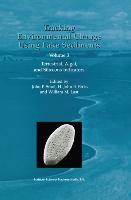- Start
- Tracking Environmental Change Using Lake Sediments
Tracking Environmental Change Using Lake Sediments
Angebote / Angebote:
Biology Distribution and ecology Taphonomy and preservation Field sampling and coring Laboratory procedures Data analysis and interpretation Summary Acknowledgements References 9. Chrysophyte scales and cysts. B. A. Zeeb & J. P. Smol 203 Introduction Taxonomy and nomenclature Methods Paleolimnological applications Future research directions Summary Acknowledgements References 10. Ebridians. A. Korhola & J. P. Smol 225 Introduction Morphology, taxonomy and preservation in the sediments Methodological aspects Brief history of use of ebridians in palaeoecological research Indicator value and future research priorities Summary Acknowledgements References 11. Phytoliths. D. R. Piperno 235 Introduction and history Phytolith production and taxonomy Laboratory methods Applications of phytolith analysis in lake sediments Summary of the major results Other potential applications of phytoliths in lake sediments Summary Acknowledgments References x 12. Freshwater sponges. 253 T. M. Frost Introduction Sponge species and their distribution Sponge life history Sponge spicules Paleolimnological studies using freshwater sponges Techniques for assessing sponge spicules in sediments Future applications of sponges in paleolimnology Summary Acknowledgements References 13. Siliceous protozoan plates and scales. M. S. V. Douglas & J. P. Smol 265 Introduction History and taxonomy Ecology Paleoecological potential Laboratory methods Data presentation Paleolimnological applications Other related siliceous indicators Summary Acknowledgements References 14. Biogenic silica. D.J. Conley & C.L Schelske 281 Introduction and history Methods Applications Future directions Summary Acknowledgements References 15. Sedimentary pigments.
Folgt in ca. 10 Arbeitstagen




